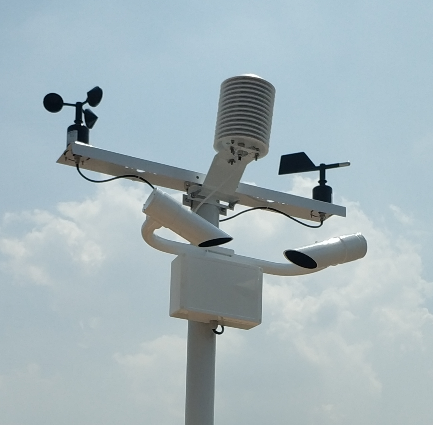Introduction
Visibility sensors play a critical role in modern meteorology, transportation, and industrial safety. These sensors measure how clear the air is. They do this by detecting light scattered by particles like fog, rain, smoke, or dust.
With advancements in sensor technology, these devices have become more precise and reliable, making them indispensable in various industries. This article explores the working principles of visibility sensors, their applications, and the industries that rely on them.
Visibility sensors operate based on light scattering principles. The two most common techniques include:
Forward Scattering Method: A light source sends out a beam. A detector measures how much light is scattered by particles in the air at a certain angle. The more scattering that occurs, the lower the visibility. This method is highly effective in detecting fog and haze.
Transmissometer Method: A transmitter emits a light beam towards a receiver over a fixed distance. The receiver measures the amount of light attenuation caused by airborne particles. The higher the attenuation, the lower the visibility. People commonly use this method in aviation and meteorological monitoring.
Some modern visibility sensors also incorporate infrared or laser-based technology to improve accuracy, particularly in extreme weather conditions.
Visibility sensors are used in various applications to enhance safety, efficiency, and environmental monitoring. Some key applications include:
Aviation and Airports: Runway visibility monitoring systems integrate visibility sensors to ensure safe aircraft landings and take-offs. They help pilots and air traffic controllers make informed decisions in foggy or stormy conditions.
Highways and Traffic Management: Workers place these sensors on roads, bridges, and tunnels. They identify fog, dust storms, and intense rain. When they do, they trigger automated warnings, adjust speed limits, and help control traffic.
Maritime navigation helps ships, guides activities in harbors, and supports operations on offshore platforms. It helps check visibility conditions. This prevents accidents from bad weather and improves maritime safety.
Weather Monitoring Stations: Integrated into meteorological systems to provide accurate visibility data for weather forecasting, climate research, and environmental studies.
Industrial and Environmental Monitoring finds application in factories, power plants, and mines. It measures airborne particle density. This keeps air quality good and ensures workplace safety.
Smart Cities and IoT Applications: Visibility sensors are now part of smart city infrastructure. They help improve transportation networks and manage traffic in real-time.
Several industries benefit from visibility sensor technology, including:
Aerospace and Aviation: Ensuring safe flight operations and navigation in low-visibility conditions.
Transportation and Logistics: Enhancing traffic safety on roads, railways, and shipping routes by providing real-time visibility data.
Meteorology and Environmental Science: Improving weather prediction, air quality assessment, and climate studies.
Mining and Construction: Monitoring dust levels to maintain air quality, reduce risks of respiratory issues, and ensure worker safety.
Energy Sector: Used in power plants, wind farms, and offshore platforms to assess environmental conditions affecting operations and maintenance.
Defense and Security: Integrated into military and security surveillance systems to enhance visibility monitoring in critical operations.

Selecting the right visibility sensor depends on specific application needs, environmental conditions, and accuracy requirements. Good visibility sensors should work well in bad weather. They should need little maintenance and fit easily with current systems.
Coda Sensor is a leading provider of high-performance visibility sensors designed for various industries. With a focus on precision, durability, and innovation, Coda Sensor offers advanced solutions for aviation, transportation, meteorology, and industrial applications. Our sensors provide real-time visibility data to enhance safety, improve operational efficiency, and support environmental monitoring efforts.
For businesses looking to integrate visibility sensors into their operations, Coda Sensor offers customized solutions tailored to specific industry needs. Contact us today to learn more about our advanced visibility sensor technology. Find out how it can help your applications.
Learn how CODA Sensor solar radiation and PAR se
Discover how real-time weather station data impr
Discover how Automatic Weather Stations (AWS) ar
Contact: Molly
Phone: +86-17775769236
Tel: 86-0731-85117089
Email: molly@codasensor.com
Add: Building S5, Aux Square, Yuelu District, Changsha City, Hunan Province, China
We chat